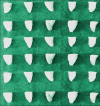Dentinal Adaptation of Warm Thermoplastic Obturating Material and Cold Thermoplastic Obturating Material: An In vitro Study
- PMID: 32015644
- PMCID: PMC6974998
- DOI: 10.4103/ccd.ccd_312_18
Dentinal Adaptation of Warm Thermoplastic Obturating Material and Cold Thermoplastic Obturating Material: An In vitro Study
Abstract
Introduction: The objective of endodontic obturation is to provide a complete seal along the length of the root canal system, thereby ensuring the healing and sustained health of the periradicular tissue. Root canal obturation involves the three-dimensional filling of the entire root canal system and is a critical step in endodontic therapy. Gutta-percha has universally been accepted as the gold standard for root canal filling materials. However, it lacks bonding to the internal tooth structure resulting in the absence of complete seal.
Aim: The aim of the present study is to compare the dentinal adaptation of warm thermoplastic obturating material and cold thermoplastic obturating materials.
Materials and methods: Thirty single-rooted, anterior noncarious human teeth extracted for periodontal or orthodontic reasons were used for the study. The samples were stored in distilled water until obturation. The specimens were then randomly divided into three groups of ten specimens each: Control group - Cold lateral condensation with AH Plus, Group I - Endosure with AH Plus®, and Group II - GuttaFlow® 2 with master cone. The obturation for each group was done following manufacturer's instructions. Under On-demand software, the area of voids at the level of 3 mm, 5 mm, and 8 mm from the apex was observed for all the samples. The obtained results were submitted for statistical analysis.
Results: The result in the present study showed that Endosure provides a better consistent seal as compared to cold lateral condensation, or GuttaFlow 2 techniques.
Conclusion: Mean void value was maximum for GuttaFlow 2 group, followed by cold lateral condensation, Endosure. Though there was a difference in the mean void values, it was not statistically significant except between Endosure and GuttaFlow 2. The result in the present study showed that Endosure provides a better seal as compared to cold lateral compaction, GuttaFlow 2 or Endosure technique.
Keywords: Cone beam computed tomography; Endosure; GuttaFlow 2; obturation.
Copyright: © 2019 Contemporary Clinical Dentistry.
Conflict of interest statement
There are no conflicts of interest.
Figures





References
-
- Aptekar A, Ginnan K. Comparative analysis of microleakage and seal for 2 obturation materials: Resilon/Epiphany and gutta-percha. J Can Dent Assoc. 2006;72:245. - PubMed
-
- Raina R, Loushine RJ, Weller RN, Tay FR, Pashley DH. Evaluation of the quality of the apical seal in Resilon/Epiphany and gutta-percha/AH plus-filled root canals by using a fluid filtration approach. J Endod. 2007;33:944–7. - PubMed
-
- Ravanshad S, Khayat A. An in vitro evaluation of apical seal ability of Thermafil obturation versus lateral condensation. Dent TUMS. 2004;1:48–55. Available from: http://jdt.tums.ac.ir/index.php/jdt/article/view/40 .
-
- Lares C, elDeeb ME. The sealing ability of the Thermafil obturation technique. J Endod. 1990;16:474–9. - PubMed
-
- Elayouti A, Achleithner C, Löst C, Weiger R. Homogeneity and adaptation of a new gutta-percha paste to root canal walls. J Endod. 2005;31:687–90. - PubMed
LinkOut - more resources
Full Text Sources
Miscellaneous

